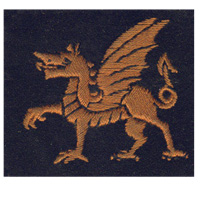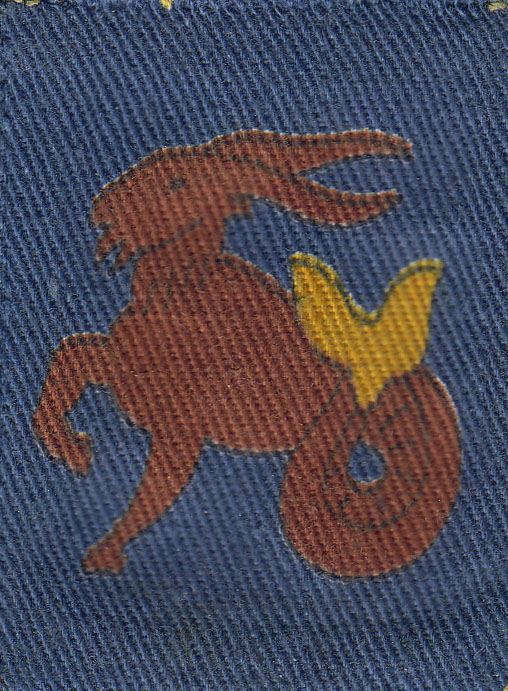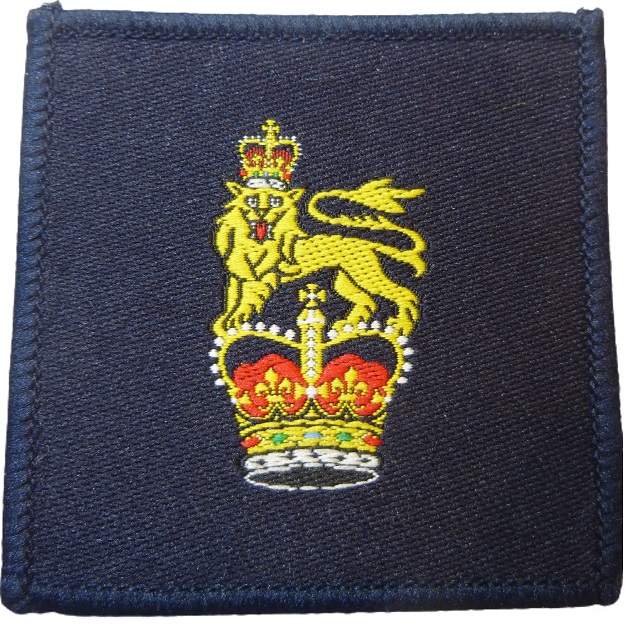
 The wide range of interests of our members is reflected in the collecting themes shown below. Click on the links to see examples of the badges discussed….
The wide range of interests of our members is reflected in the collecting themes shown below. Click on the links to see examples of the badges discussed….
Cloth military badges have a comparatively short history. The oldest are those indicating rank which have been worn in some form since the eighteenth century. Traditionally Soldiers Rank Badges were sewn to the arms whilst Officers Rank Badges were on the shoulders, The mid-twentieth century saw officers mount them on removable sleeves or slides. Towards the end of the twentieth century they were produced in subdued colours and all ranks now wear them in the centre of the chest in combat uniforms.
Almost as ancient are those badges indicating Skill at Arms, Trade and Proficiency. The oldest date from the 1850s and indicate proficiency with weapons. Numerous others have been introduced since to match the ever changing skills required from the soldier.
The First World War saw the introduction of most of the cloth badges we now recognise. To save metal, regimental titles worn on the shoulder in brass were replaced by cloth variations slipped over the shoulder strap. Some regiments favoured more colourful ones sewn at the top of the sleeve. The large numbers of vehicles and soldiers saw the introduction of distinctive signs to indicate easily to which formation such as Division or brigade a soldier or vehicle served with. Originally simple geometric shapes, some developed into more elaborate designs. These divisional signs were no longer required when the war ended and were abolished.
 The Second World War was undoubtedly the heyday of the cloth badge. Originally frowned on, by late 1940 cloth signs had been reintroduced for the fighting divisions and when their use was extended became known as Formation Signs. Use of the colourful Cloth Shoulder Titles (the War Office called them regimental designations) was at first confined to the Foot Guards but their use spread until in 1943 they were introduced for the whole army. Both signs and titles remained in use in the British army until the late 1960s when the uniform for which they had been designed, battledress, was replaced by No2 Dress and Combat suits.
The Second World War was undoubtedly the heyday of the cloth badge. Originally frowned on, by late 1940 cloth signs had been reintroduced for the fighting divisions and when their use was extended became known as Formation Signs. Use of the colourful Cloth Shoulder Titles (the War Office called them regimental designations) was at first confined to the Foot Guards but their use spread until in 1943 they were introduced for the whole army. Both signs and titles remained in use in the British army until the late 1960s when the uniform for which they had been designed, battledress, was replaced by No2 Dress and Combat suits.
During the Second World War a large number of civilian organisations sprang up on the Home Front to support the war effort. Some like the Air Raid Precautions (ARP) Services (later Civil Defence) and Women’s Voluntary Services (WVS) were planned before the war. Others, like the Home Guard developed to meet wartime emergencies. Many of these organisations wore uniforms – often the same battledress as the army - and numerous badges exist for them.
Although the main users and creators of cloth badges have been army units, the other two armed services have worn them as well, especially during the Second World War when the concept of combined operations saw many sailors and airmen in army-style battledress. The Royal Navy has an extensive range of trade badges reflecting the changes to its weapons over the years, from guns to guided missiles. The Royal Air Force’s flying badges are known world-wide, although some of its other badges are less familiar.
 Cloth badges went into decline in the British Army in the 1970s with the introduction of disruptive pattern (camouflaged) combat uniform but staged a comeback during and after the first Gulf War. Modern Cloth Badges – Formation Badges for operational divisions and brigades and Tactical Recognitions Flashes or TRFs indicating the regiment or corps to which a soldier belongs now liberally decorate British combat uniforms.
Cloth badges went into decline in the British Army in the 1970s with the introduction of disruptive pattern (camouflaged) combat uniform but staged a comeback during and after the first Gulf War. Modern Cloth Badges – Formation Badges for operational divisions and brigades and Tactical Recognitions Flashes or TRFs indicating the regiment or corps to which a soldier belongs now liberally decorate British combat uniforms.
In addition to these many organisations, there has, since the beginning of the twentieth century been a thriving cadet movement producing officers for the forces, preparing wartime youth for service in the forces and providing experience of leadership and civic responsibility in peacetime. Cadet Force Badges are yet another area of cloth badge collecting.
Whilst the Military Heraldry Society’s main interests lie with the British forces, our founders’ interest in cloth badges worldwide means that our members, many from overseas, collect and study Cloth Insignia From Around The World with details featuring regularly in the pages of Our Journal.
If you feel that the Society is for you and would like to join, please click here
If you would like more information before joining please email militaryheraldrysociety@gmail.com
04/21